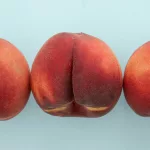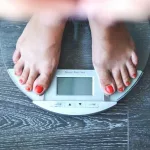Why the “Sugar Rush” Trips Us Up
So, let’s get real for a minute… How many times have you reached for a candy bar or a soda thinking, “I just need a quick pick-me-up!”? (Been there, more times than I like to admit.) You unwrap the chocolate, maybe you’re in a 3 p.m. work haze, expecting to feel that surge of energy instantly. But then—nothing happens. Not right away, anyway. The truth about how long it takes for sugar to “kick in” is sneakier than most of us realize… and honestly? It’s one of those quiet mistakes tons of people make without even noticing.
It’s easy to assume sugar works like magic. Craving energy? Eat sugar, feel better immediately, problem solved, right? Actually… not quite. There’s a bit more to the story (and your biology) than that.

Sugar’s First Steps: The Real Timeline
Alright—picture this. You’ve just eaten a slice of cake. Or maybe it’s a handful of jellybeans. Now what? Despite what we might hope (me, every time at a birthday party), sugar doesn’t launch you into a “sugar high” the second it hits your tongue. Instead, it’s like your body pushes a slow-motion button: sugar makes its entrance about 10 to 15 minutes after you finish eating. That’s when blood sugar actually starts its rise (according to research on post-meal sugar timing).
If you want to geek out on the science-y parts, what’s really happening is your digestive system gets to work turning those jellybeans (or cake) into glucose—a fancy word for sugar in your blood. That’s the real star of this story. And that process isn’t instant. (Sorry, impulse snackers…)
Where Does the Sugar Go First?
A little detour. Have you ever asked yourself: how long does it take sugar to enter your bloodstream? Here’s where things get interesting. From your mouth, sugar heads down and lands in your small intestine pretty fast—especially if it’s a liquid or a pure sweet. Then, it slips through your gut walls and into your blood. That’s when your body starts its chemical celebration: insulin jumps in, ready to help “unlock” your cells (so you can actually use that sweetness as energy).
You can read the nitty-gritty breakdown at How long does it take sugar to enter your bloodstream (it’s honestly pretty fascinating if you love details).
Quick-Sugar Table: How Fast Will You Feel It?
| Food or Drink | How Fast It Kicks In | The Feeling |
|---|---|---|
| Fruit juice (no fiber) | 10-15 minutes | Energy jolt, doesn’t last |
| Hard candy (pure sugar) | 10-15 minutes | Quick lift, quick drop |
| White bread or pasta | 15-30 minutes | Gradual boost, fades soon |
| Oatmeal with fruit | 30-45 minutes | Steady energy, no crash |
| Chocolate bar (w/ fat) | 20-40 minutes | Sneaky—less immediate, longer buzz |
No Two Sugar Rides Are the Same
Ever notice how sometimes your sugary snack makes you feel peppy and focused… but other times you just end up sleepy or jittery? (Raise your hand if you’ve dozed off after dessert. No? Just me?) It’s not just your imagination. How long it takes for sugar to kick in, and how you feel during that “kick,” totally depends on what else you’ve eaten, how active you are, and your body’s personal style when it comes to handling sugar.
If you chow down on a sugary cereal first thing in the morning—no fiber, no protein, basically childhood in a bowl—you’ll probably feel that rush in about 10 or 15 minutes. It can feel amazing at first! But here’s the plot twist: it will fade quickly. (Let’s just say… naps are coming.) On the other hand, if you eat the same cereal with some yogurt or nuts, things move slower. That energy? It sticks around, steadier and more reliable, with less “crash.”
When Does Energy Actually Peak?
Alright, back to our jellybean (or cake) scenario. For most healthy people, blood sugar usually peaks around 60 to 90 minutes after you eat. That’s right—it takes about an hour for you to really feel that top-of-the-mountain wave. Then, it slowly comes back down, returning to normal in two to three hours (based on post-meal glucose research).
But your “kick” isn’t just about the numbers. Physically, you might feel alert, hyper, or even a little fidgety. Sometimes it’s an awesome boost (like before a workout). Other times, it gets uncomfortable (that weird fluttery energy in your legs).
Personal Story Break
I’ll never forget the time I ate two huge iced cinnamon rolls right before a college exam—absolutely sure it’d give me brainpower. About fifteen minutes later, I was bouncing in my seat, then halfway through the test… total crash. I finished, sure, but my energy and focus went out the window. It was an epic sugar “kick” and crash—lesson learned the sticky way.
Why Some Kicks Stall (And Some Go Wild)
Here comes the curveball: your sugar ride isn’t just about what’s on your fork… it’s about what else is happening in your body. For folks with diabetes, for example, sugar takes longer to return to normal levels after a meal. That’s because insulin—your body’s sugar chaperone—doesn’t work the way it should (learn more about insulin and blood sugar if you want a sciencey deep dive). For the rest of us, mixing sugars with proteins, fiber, or fat makes the ride gentler… sometimes you won’t “feel” the sugar at all.
Ever had a friend who treats dates or gummies like a pre-run superpower? (I do—it’s hilarious to watch.) Give them a sugary snack before a workout and bam, they’re off like a rocket. Still, if they overdo it—whoops, here comes a mid-mile “energy outage.” If you’re curious how this all connects to lasting energy, you might enjoy How long does it take for sugar to give you energy, especially for athletes or busy days.
Can You Feel the Sugar Sooner?
Oh, definitely! But only if you choose wisely. Simple sugars (think: apple juice, honey, glucose tabs) zip into your bloodstream fastest—great in emergencies (like low blood sugar), kind of chaotic for regular snack attacks. Toss in a protein shake, fiber bar, or almonds? Everything slows down… and your ride is much smoother.
If you ever want to see the real timeline, try this experiment: next time you reach for a sweet snack, check the clock. Pay attention to your mood, your energy, and your focus for the next two hours—see when the “kick” shows up for you. (Bonus points if you make it a habit. Personal health detective, reporting for duty!) For a little extra detail, here’s the science-y rundown on How long does it take sugar to enter your bloodstream.
The Sugar Crash: Now What?
Let’s not pretend… where there’s a sugar high, there’s almost always a sugar crash lurking in the shadows. You ride that fuzzy wave, then—poof—it’s gone. Suddenly, you’re tired, cranky, way hungrier than before. That’s the notorious crash.
So, what causes the crash? Your body goes on a clean-up mission: insulin rushes in to help your cells soak up the sugar. But if there’s too much sugar, or you dumped it in too fast, your blood levels drop sharply—and often, they dip lower than before you even ate. (Yikes.) That’s the classic post-cookie regret, and yep, it’s totally real (see a breakdown of a real sugar binge here).
How to Outsmart the Crash
You don’t have to give up all sweet things forever (promise!). Here are a few tricks I’ve learned, some from personal trial-and-error:
- Always pair your sweet treat with some fiber or protein—think nuts, yogurt, even a piece of cheese. Trust me, it really helps.
- After a carb-y meal, try a short walk! Seriously, just 10 minutes. I started doing this after lunch, and my afternoon crashes nearly vanished.
- Fluids matter. Water helps your body process that sugar smoothly—so keep it handy.
If you want to see side-by-side energy comparisons, How long does it take for sugar to give you energy covers things like: fruit vs. soda, bars vs. quick-sugar candies… super useful if you exercise or just want to stay clear-headed at work!
What Really Affects How Long Sugar Takes to Kick In?
Let’s wrap it all together here: Whether sugar “kicks in” right away, or not for a while, depends on a bunch of little things—your meal, your body’s insulin response, the specific type of sugar, even your activity levels.
Liquids and pure sugar snacks? Fastest, but wild. Sugars paired with whole foods and a bit of fat or protein? Slower, steadier, and, honestly, kinder to your mood (and your waistline). If you’re managing your blood sugar more closely—for diabetes or any health reason—it’s especially worth learning your own patterns. The more you pay attention, the more you’ll know exactly when that energy jolt will hit.
Reflections and a Little Humor
So, next time you’re eyeing the vending machine mid-meeting, maybe pause for a moment. Ask yourself: how long does it take for sugar to kick in for me? Often, the answer is “slower than my cravings want”—but that doesn’t mean the kick isn’t coming. It’s just… lurking (like an excited puppy on the other side of the door, waiting for you to open it with the right snack combo).
What do you think about this approach? Ever noticed you get the jitters from a soda, while your friend just gets hyped up and then keeps going? (Or, vice versa?) It’s your body, your timing, your playbook.
Wrapping It Up—Ride the Wave, Don’t Get Wiped Out
Sugar: it’s delicious, a little bit mysterious, and definitely not an instant miracle worker. For most people, how long does it take for sugar to kick in? About 10 to 15 minutes for that first rise, with the full “boost” landing somewhere between 60 and 90 minutes after you eat. Then, it returns to normal in a couple of hours… if you strike the balance right.
Here’s my two cents, friend-to-friend: Don’t let sugar call all the shots. If you know your timing—what kicks you up, cools you down, keeps you steady—you’ve got all the power. Next time you want real, lasting energy? Go for a blend. Add some nuts, take a short walk, maybe try a fiber bar instead of that solo soda. See what actually feels good, beyond what the commercials promise.
And hey, you don’t have to make changes overnight. Try tracking how sugar makes you feel for a few days. You’ll be amazed what patterns you start to spot. If you want a little more guidance, peek at How long does it take for sugar to give you energy for honest, practical tips you can use right away.
You deserve to feel steady, alert, and at home in your body—all day. So here’s to choosing your sweet moments, timing your “kicks,” and feeling awesome because it fits your life. (Let me know your favorite sugar story in the comments—I’d love to compare notes!)


















Leave a Reply
You must be logged in to post a comment.